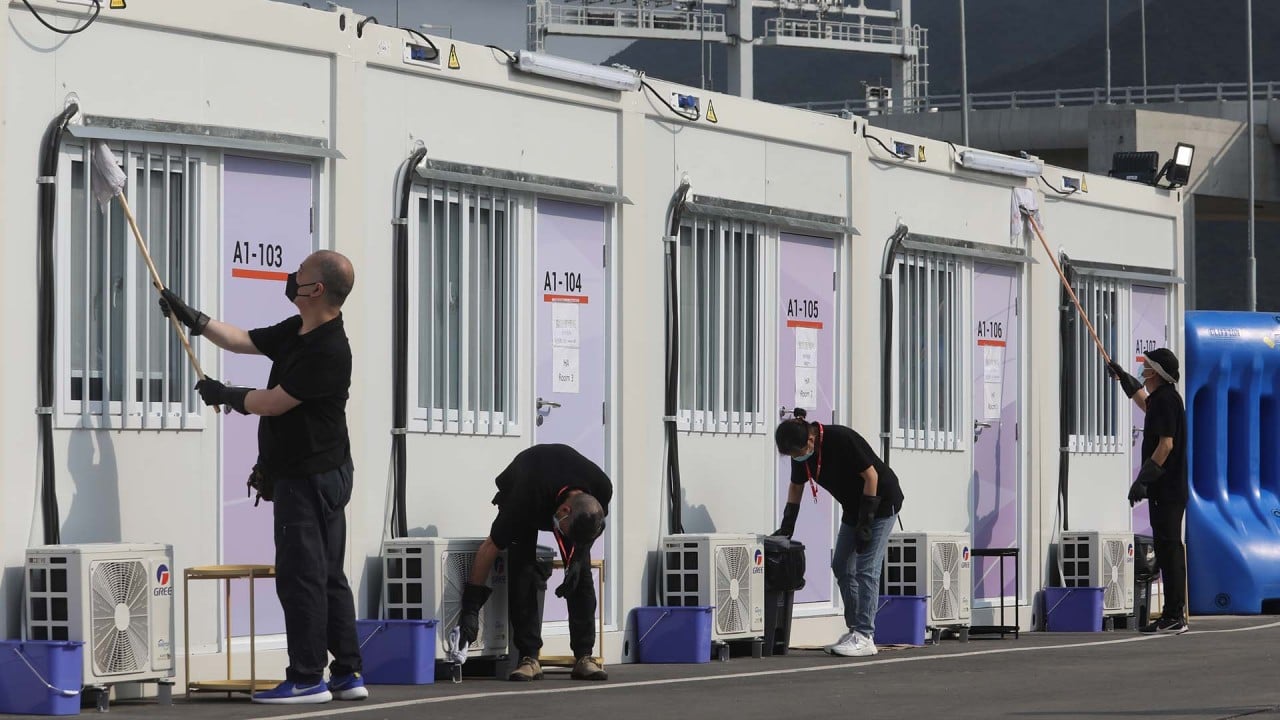
Don’t let Hong Kong’s construction innovation stop with Covid-19
- The erection of isolation facilities for Covid-19 patients shows that, when the authorities get serious, they can build quickly
- But it shouldn’t take a crisis to realise Hong Kong’s potential; the city should be at the forefront of construction research and development
About 75 years ago, when Le Corbusier sketched out a “plug-in concept” for the Unite d’Habitation residential project in Marseilles, the French master architect already envisioned prefabricated apartments being hoisted and inserted into a concrete structural frame. His vision was limited only by the technology available at the time.
Fast forward to 2016 and New York’s SHoP Architects completed the B2 affordable housing project in Brooklyn – the tallest modular building in the world at the time, at 32 storeys. The project was realised in a city with building codes as stringent as Hong Kong’s, if not more so.
The construction of these basic units within days or weeks deserves credit and recognition. But, without taking anything away from the hard work and efforts of the teams that completed these projects, it was nothing “miraculous”. The efficiency and benefits of MiC might have been an eye-opener for our officials. However, it is nothing new for the construction world.
On one hand, the authorities encourage innovation and creativity in their policy addresses and reports. On the other, officials behave conservatively when it comes to taking profound technological leaps. When we finally catch up with the rest of the world, we pat ourselves on the back for being at the forefront of innovation, when the reality is that other countries are light years ahead.
Has ‘Commander’ Lam finally got a grip on Hong Kong’s Covid war?
Hong Kong offers the best testing ground for construction innovation. We are an international city with first-class infrastructure and one of the highest population densities, with more than 7,000 people per sq km, in one of richest economies in the world, with a per capita income of US$46,200.
We have the resources, backgrounds and social conditions, not to mention the brightest and hardest-working design professionals and best contractors to test out new ideas that can benefit the most people in the shortest time possible.
What other type of construction innovation could we consider? To name a few, we should be looking at building skyscrapers out of timber, which is proven to be safe, fast and sustainable by significantly reducing embodied carbon without a reliance on concrete and sand.
Five years ago, architects in Vancouver had already built an 18-storey student housing block at the University of British Columbia, the world’s tallest building constructed of timber at the time.
We should mandate the use of building information modelling (BIM) – the digital representation of the physical and functional characteristics of a facility to enable collaboration – for all construction projects, and establish networks of building data to develop city information modelling (CIM), which would transform sustainability development and urban planning in a holistic data-driven manner.
How Hong Kong can be a successful city in the post-pandemic world
Countries including the United States, Britain, France, Germany, Australia, Singapore and China are leaders in BIM adoption and progressively taking steps to achieve CIM.
We are a world capital of skyscrapers and high-rise buildings and should be at the forefront of construction research and development. It should not take a pandemic crisis or a message from the president to realise our potential. The makeshift isolation centres merely epitomise the saying that “desperate times call for desperate measures”.
The pandemic showed us what is achievable; we were simply not desperate enough before. But it is better late than never. We should be desperate, not for the sake of catching up with others, but to build an affluent and sustainable society that would be truly miraculous.
Dennis Lee is a Hong Kong-born, America-licensed architect with 22 years of design experience in the US and China



